MONASTERIES AND PALACES AROUND LEH.
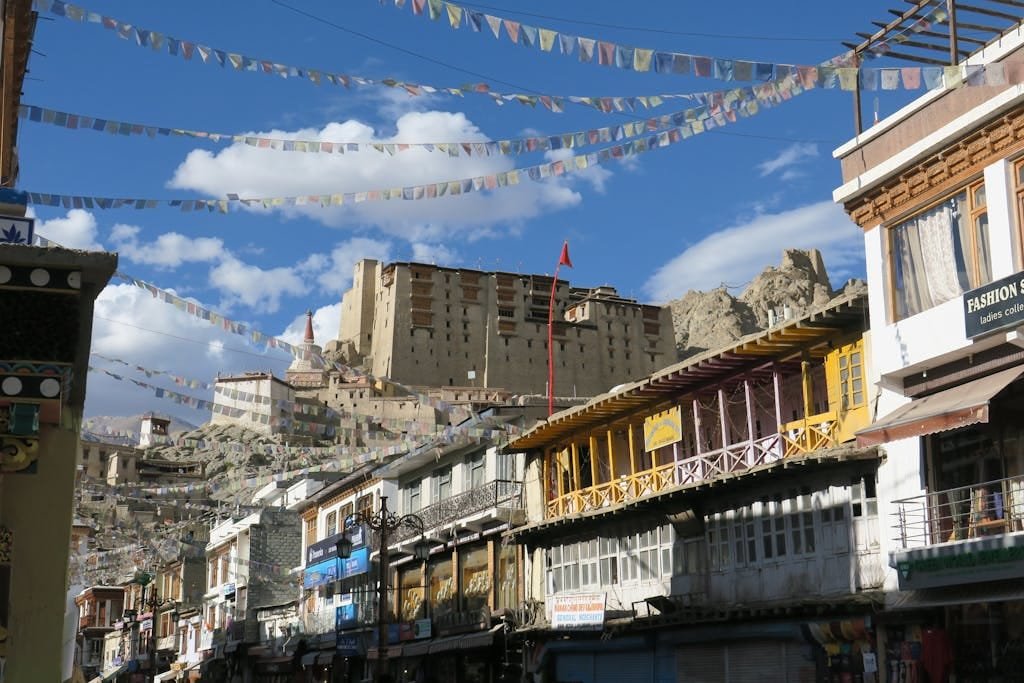
Ladakh’s colorful Gompas have attracted people from all over the globe. Ladakh is one of the most rugged regions of the entire Himalayan range and is often referred to as a Trans-Himalayan zone because of its position between the Great Himalayan Range and the vast Tibetan plateau.
Leh, the main town lies nestled among low hills has been a place where travelers of different nationalities have rested for centuries. Today, Leh is popular with different kind of adventure and culture loving tourists and makes an ideal base to explore the region. Scattered along the Indus Valley, both east and west of Leh are fascinating towns, villages, palaces and above all GOMPA’S. Some are visited by almost every traveler who visits Ladakh while others remain the preserve of the dedicated few.
A tour of the Gompa’s is high on most people’s list. GOMPA in ladakhi means “a lonely place” and though some monasteries are quite integrated into villages, but there are many that are indeed lonely and many remote. Central ladakh has the most and the most famous ones of Ladakh’s monasteries.
Few of the famous monasteries on the list are:-
SHANTI STUPA:-
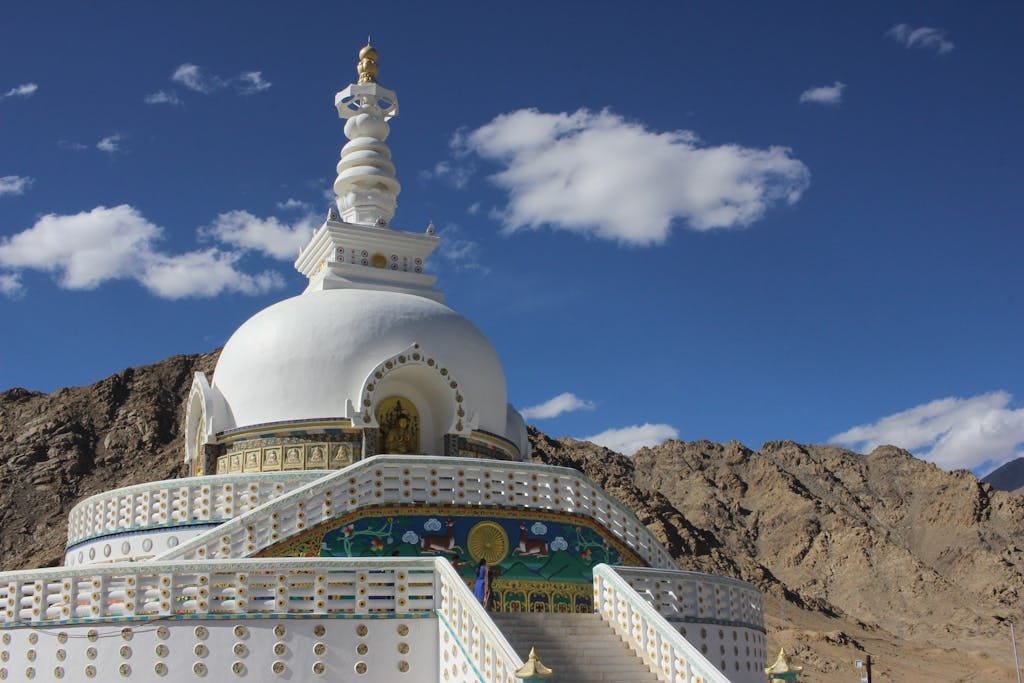
A magnificent white-domed structure built by Japanese for world peace at a hill top in Changspa village. H.H Dalai Lama inaugurated it in 1985. It’s state of the art work attracts a lot of tourists visiting Ladakh. Spectacular view of Leh town can be from this vantage point.
Leh Palace:-
Built by King Sengge Namgyal in the 17th century is of same style as POTALA PALACE of Lhasa. The building stands majestically overlooking the town. The Palace is under the Archaeological survey of India.
SPITUK :-
This was the first Gelukpa (yellow hat) monastery to be established in Ladakh. This monastery was originally founded during 11th century as a KADAM-PA establishment. Rinchen Zangpo predicted that a monastery would be found here and that would set an example to other monasteries in the land. The monastery you see today was built in 15th century on the site of the 11th century temple.
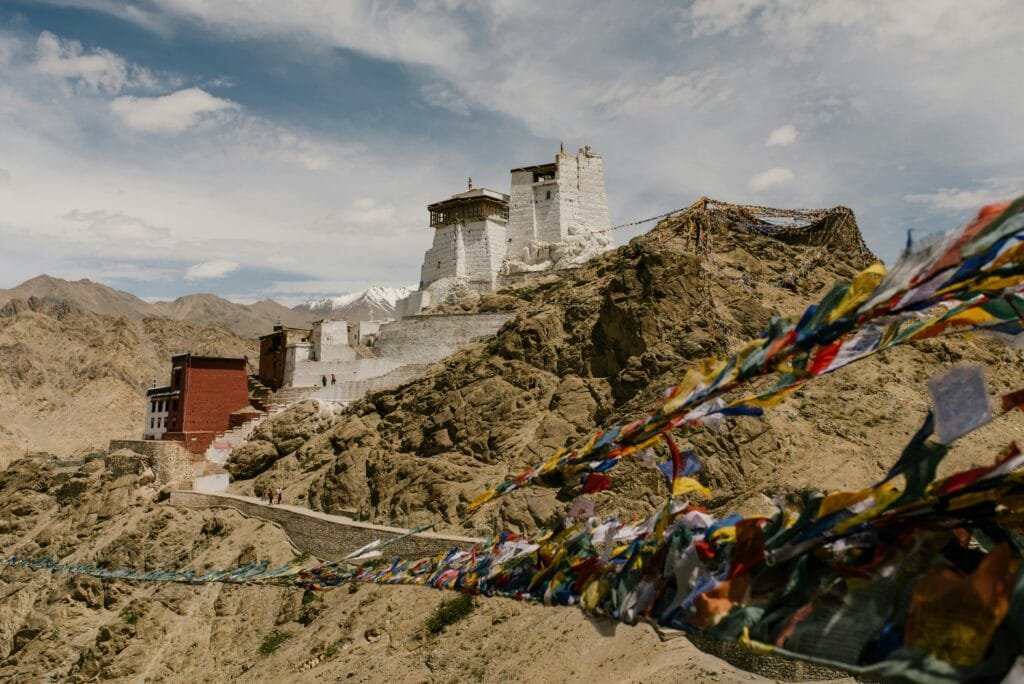
The festival of Spituk Gustor is held here every year on the 28th & 29th of the 11th Tibetan month which correspondingly falls in the month of January.
PHYANG:-
This 16th century gompa was ordered by, Tashi Namgyal. The monastery is located on a small hill above the attractive village and like LAMAYURU belongs to Kagyupa
(red hat) order monks. It’s thought that he was trying to seek forgiveness for blinding his elder brother, a devious act that made him heir to the throne and soon after the king.
Annual festival called Phyang Tse-dup is held on the 2nd and 3rd of the 6th Tibetan month which falls in July-August.
BASGO:-
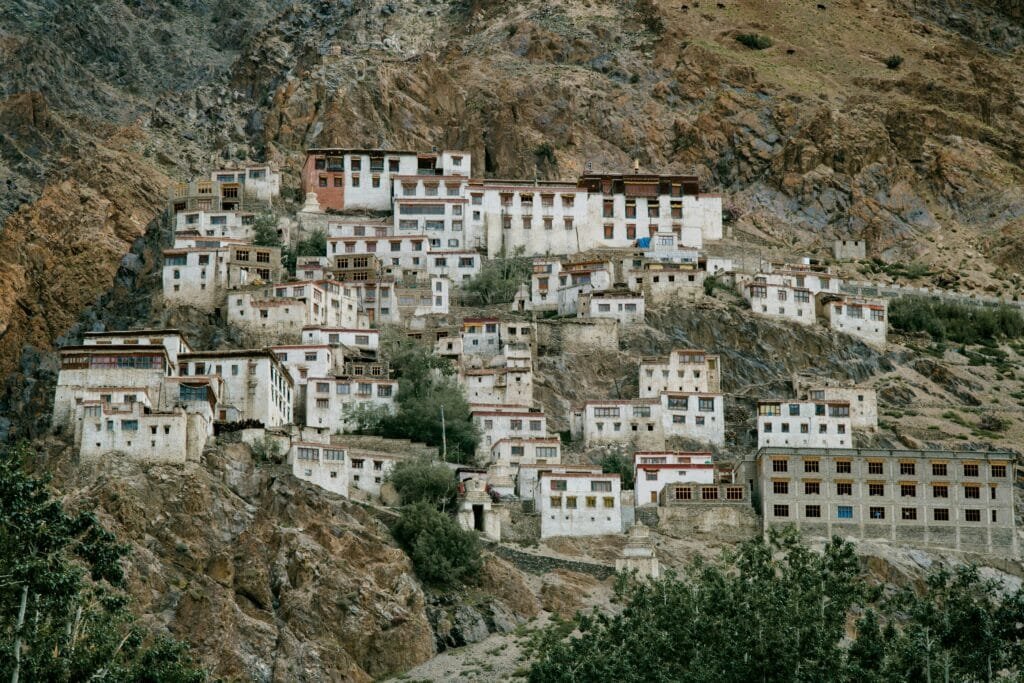
Basgo is an abandoned fortress in Ladakh (Indian Himalayas). It has several buddhist temples including one where a team of local fresco experts have been working for 8 years to restore the centuries old paintings. It’s a very eerie and isolated place. Basgo is, of course, known for its castle ruin and the adjoining royal temples spectacularly located on the rocks. Basgo was the capital of lower Ladakh before the kingdom was united at Leh. Until recently, this fascinating World Heritage Site was crumbling into dust, but UNESCO and the Basgo Welfare Committee have joined forces to restore the ancient citadel compound. Today, Basgo’s Chamba Gompa is one of the highlights of the Indus Valley.
ALCHI:-
The CHOSKOR, or religious complex at ALCHI, once a thriving religious center but now deserted, is situated on the bank of river Indus. This is one the most important cultural sites in Ladakh. This 11th century Choskor was founded by Lak-Dan Shas_rab, a Tibetan noble man who accompanied Nyima-Gon into Ladakh.
It’s a treasure trove of early Buddhist art in the Kasmiri tradition, a style quite different from the Tibetan art found in Ladakh’s other gompas.
LIKIR:-
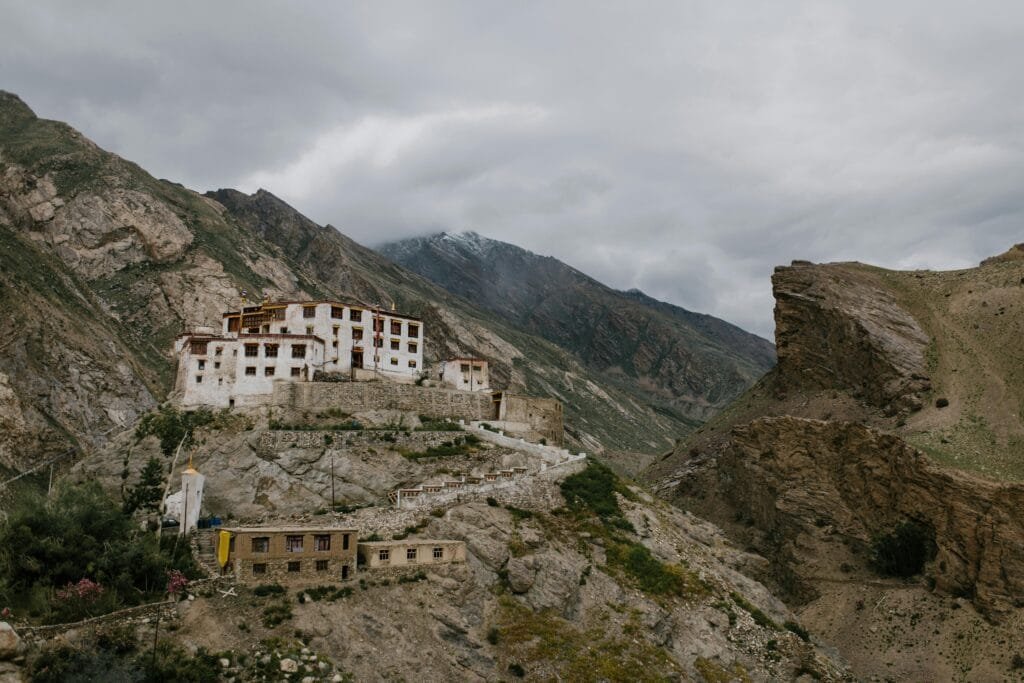
As the original structure of the monastery at Likir was destroyed by fire so the building you see today is about 200 years old. The land to monastery was given in 1065. The monks are of Gelukpa order and is under direct charge of ‘Nari Rimpoche’ whose present incarnation is Dalai Lama’s younger brother. The monks of this monastery are also care taker of Alchi gompa and several of the small gompas in the area. There is a small museum with intresting royal artifacts, arms and armour on show.
RIZONG:-
Gelukpa monasteries are known for their strict discipline but Rezong is reputed to be the strictest of them all. The monks of the monastery own nothing more than the robes they are wearing and all eat the same food from the gompa kitchen. The Gompa, just over 160 years old, contains little of historical interest but its location in this quite valley is worth a visit. There is a small Chulichan nunnery too.
LAMAYURU:-

Also Known as YUNG-DRUNG or SWASTIKA is one of the immediately striking in Ladakh. It’s position on top of a beautifully eroded crag, complete with rock pinnacles and caves, gives it an almost fairy-tale quality as it stands over the small village below. The gompa was originally dedicated to the Bon-Cho deities before it was taken over by the Buddhists. Later it was converted into a stronghold of the Kagyupa sect (red hat).
The site of the monastery is probably the oldest in Ladakh. The landscape around is fabulous, this is also called “moon land”.
‘Yuru Kab-Gyat’ the festival at Lamayuru is held every year on the 17th & 18th day of the 5th Tibetan month which generally falls in July.
SHEY:-
About 14 kms. from Leh located on Leh- Manali highway was the old capital and home of the kings of Ladakh before the new capital was established in Leh. The palace sits in a strategic position on a spur jutting out into the Indus valley. Shey enjoyed power and prestige as the ruins of the fort and palace at Shey testify. The main temple contains a large Buddha statue sculpted by Nepalese craftsmen.
THIKSEY:-
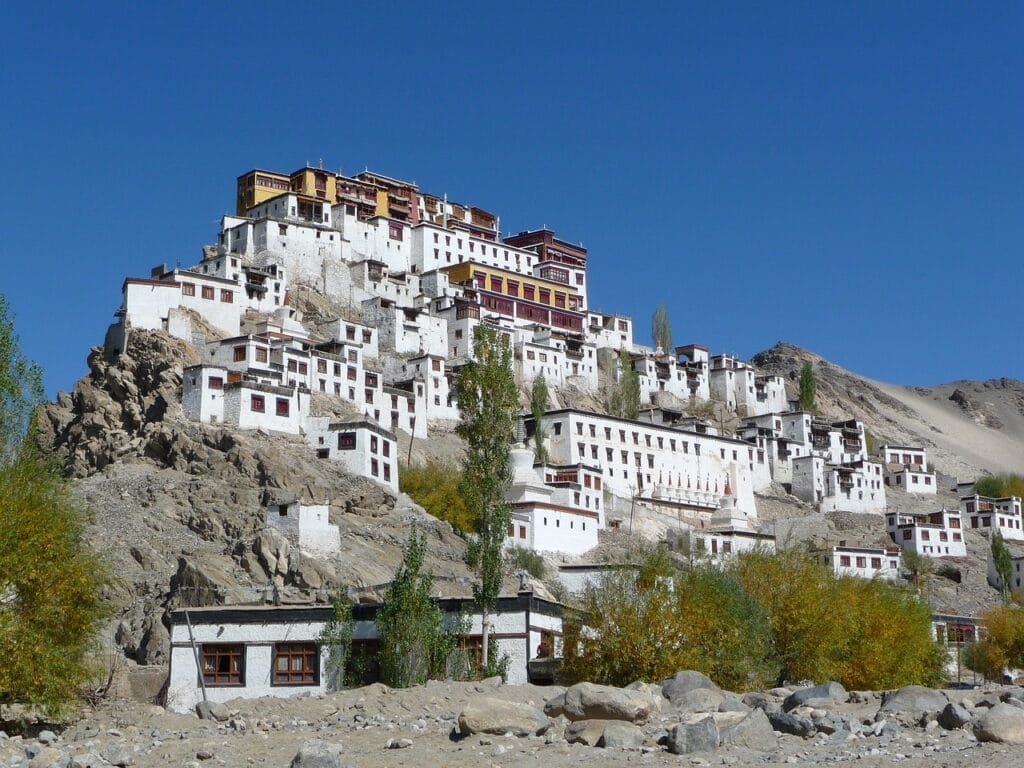
The monastery is one of the largest in Ladakh. This gompa is an impressive one situated on top of a craggy hill while the rest of the complex sprawls down beneath it. It was founded in 15th century by Gelukpa monks and houses more then 500 monks.
The temple on the right of the courtyard houses 15 meter statue of the Maitreya, or future Buddha, which was finished in 1981, while at the back of the Dukhang there is a Buddha statue dating from the 15th century.
Thiksey monastery celebrates its GUSTOR two months in advance, 17th & 19th of the 9th Tibetan month which generally falls in November.
HEMIS:-
The monastery founded in 17th century is one of the most famous one mainly due to its spectacular annual festival. Having the royal patronage of King Sengge Namgyal, Hemis soon became the largest and the richest of Ladakhs Gompas.

Hemis is sometimes called Chang Chub Sang Ling, ‘the solitary place of the compassionate ones’; it belongs to the Kagyupa sect. The village and gompa lie tucked up a side valley south-west of Karu. Around 42kms.
MATHO:-
This is the only Saskya-pa gompa in Ladakh, one of the last Red Hat sects to be founded in Tibet. The monastery is situated on a hill in a lateral ravine of the Stok-Khnagri range across Indus. It is believed to be around 500 years old and now has a resident community of about 60 monks.
The monastery has become famous for its annual festival, during which specially chosen monks become the vehicle for an Oracle. ‘MATHO NAGRANG’ the annual festival is held on the 14th & 15th day of the 1st Tibetan month, which generally falls during the months of Feb – Mar. For several days they answer people’s questions and predict the following year’s events while in a trance.
STOK:-
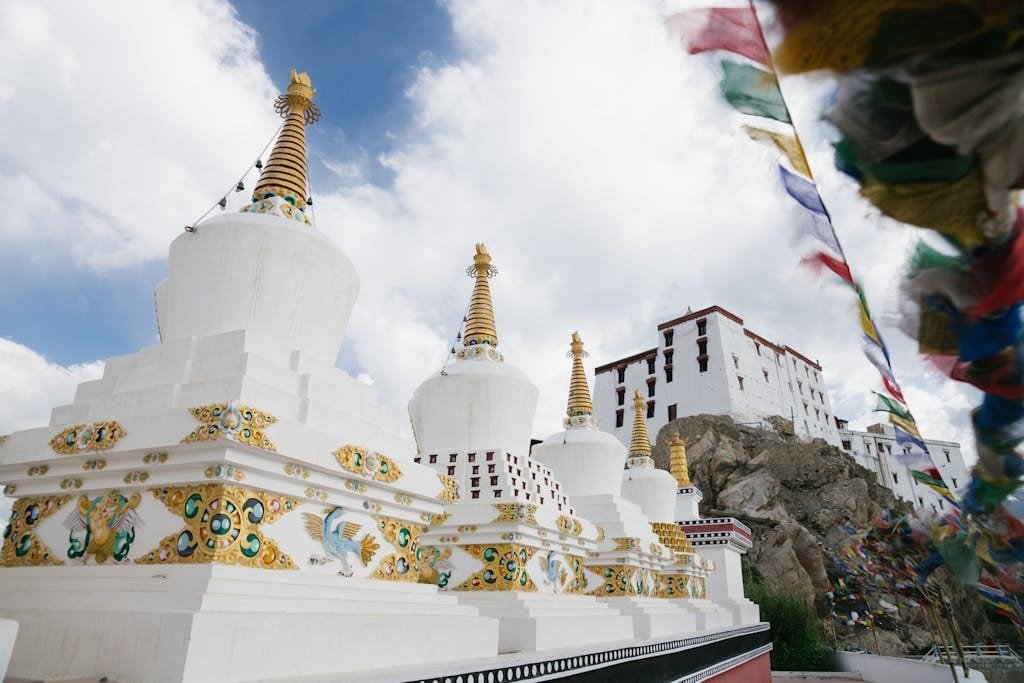
Since the King was dethroned by the Dogras the royal family is residing here. There is an interesting museum that contains an odd collection. A visit to Stok Palace is worth a visit. There is small monastery too which belongs to Gurphug, a branch of Spituk monastery.
‘Guru Tse-Chu’ over here is held on 9th & 10th day of the 1st Tibetan month.
